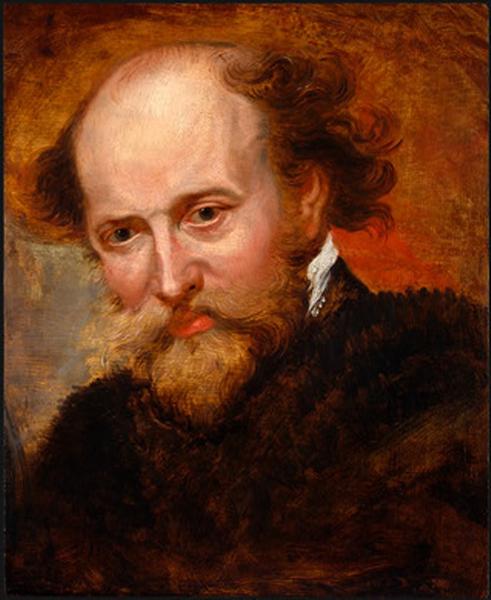Description
Peter Paul Rubens’ Self-Portrait from 1620 is a key work in the study of 17th-century art, offering a profound insight into the painter’s artistic identity and technical mastery. In this painting, Rubens presents himself with great fervour, capturing not only his countenance but also a palpable sense of charisma and presence. The work is a testament to his ability to marry the familiarity of portraiture with the grandeur of his Baroque style.
At first glance, the viewer is drawn to Rubens' face, which looks out with a serene but intense expression, full of personality. The composition is constructed so that the artist is placed almost in the centre, looking straight ahead, suggesting a direct connection with the observer. The slightly inclined posture of his head and the light that caresses his face accentuate his introspective and reflective character. This gesture, so characteristic of many of his self-portraits, becomes a dialogue between the artist and the viewer, a shared moment that conveys Rubens' confidence in his skill.
The use of colour is one of the most striking elements in this masterpiece. The warm tones, ranging from the golden hues of the background to the subtle reds and ochres of Rubens’s costume, create a welcoming and vibrant atmosphere. The palette reveals his mastery of colour and the way it can be used to communicate emotions; the play between light and shadow adds volume and depth to his depiction. The detailed treatment of the skin, with its subtle transitions and the imprint of his brushstrokes, reflects a technical mastery that Rubens had honed throughout his career.
Rubens is not only known for his ability to portray historical and mythological figures, but this self-portrait also establishes a bridge between his personal life and his professional sphere. This self-portrait is set in a cultural context in which artists began to be recognized not just as mere workers, but as creators worthy of appreciation and admiration. The portrait can be interpreted as an affirmation of his place in the artistic society of his time.
Rubens’ work is notable not only for its iconographic and historical themes, but also for the way he shares his humanity. By portraying himself, the painter invites the viewer not only to see his face, but also to delve into his psychology, his creative process, and his innermost emotions. Through his technique, Rubens offers a window into the soul of the Baroque artist, immortalizing a moment in time that continues to resonate powerfully today.
This self-portrait stands as an example of Rubens’ ability to synthesize realism and drama in an image that is both personal and universal. Important parallels can be found between this work and other self-portraits by contemporaries such as Rembrandt, although in Rubens’ case, the influence of his Flemish surroundings, his passion for colour and his ability to capture the essence of the Baroque make this portrait unique. In conclusion, the Self-Portrait of 1620 not only stands as a fundamental piece in the author’s repertoire, but as a work that encapsulates the brilliance of Baroque art and the relevance of the artist’s figure in his time. The work is a reminder of Rubens’ journey not only as a painter, but as a person who managed, through his art, to communicate with future generations.
KUADROS ©, a famous painting on your wall.
Hand-made oil painting reproductions, with the quality of professional artists and the distinctive seal of KUADROS ©.
Painting reproduction service with satisfaction guarantee. If you are not completely satisfied with the replica of your painting, we will refund 100% of your money.

